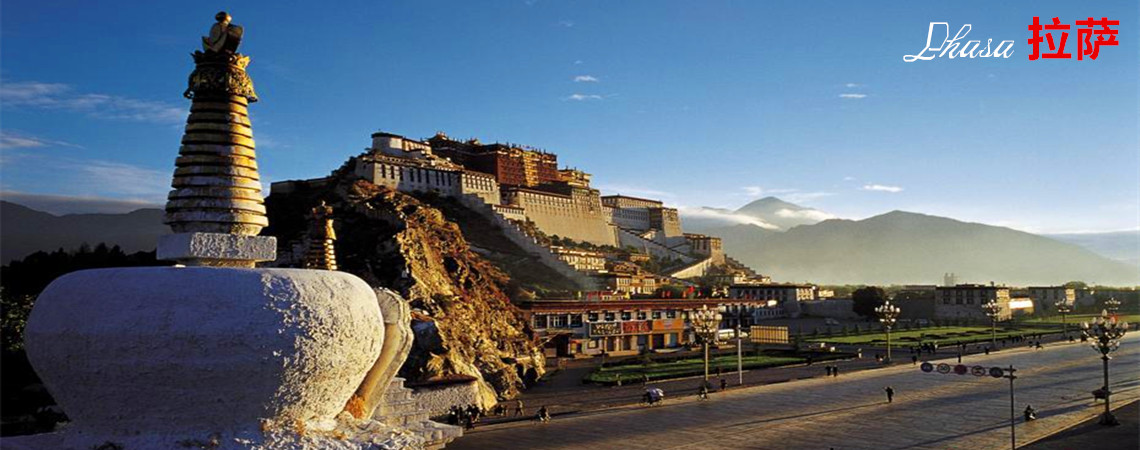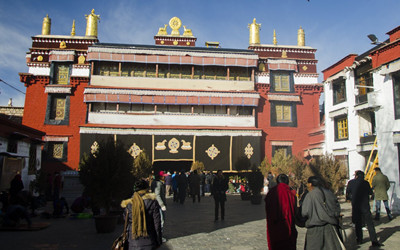Skype: neodalle-travel
Tel: +86 135 7447 2266
E-mail: sales@visitaroundchina.com

 History of the temple
History of the temple
The original building complex has a strong Tang architecture influence, for it was first built by Han Chinese architects in the middle of the 7th century (during the Tang Dynasty). Han Princess Wencheng took charge of this project and ordered the temple be erected facing east to show her homesickness.The present temple is the result of the large restoration of 1986.
What to see?
Ramoche Monastery fell into ruins and went through many reconstructions - only the Buddha palace on the first floor is left in its original state. The main building in the temple has three stories. The first story includes an atrium, a scripture hall, and a Buddha palace with winding corridors.
The third story was the bedroom once reserved for Dalai Lama. Upon entering the main building, one can see the ten pillars holding some of the remaining local relics such as the encased lotus flowers, coiling cloud, jewelry, and particular Tibetan Characters.
The golden peak of the temple with the Han-style upturned eave can be seen from any direction in Lhasa city. Needless to say, the temple is a wonderful example of the combination of Han and Tibetan architectural styles.
Travel tips
Add: In Lhasa City, Tibet
Entrance fee: CNY 30
Opening hours: 09:00-17:00
 Ask Questions ?
Ask Questions ?